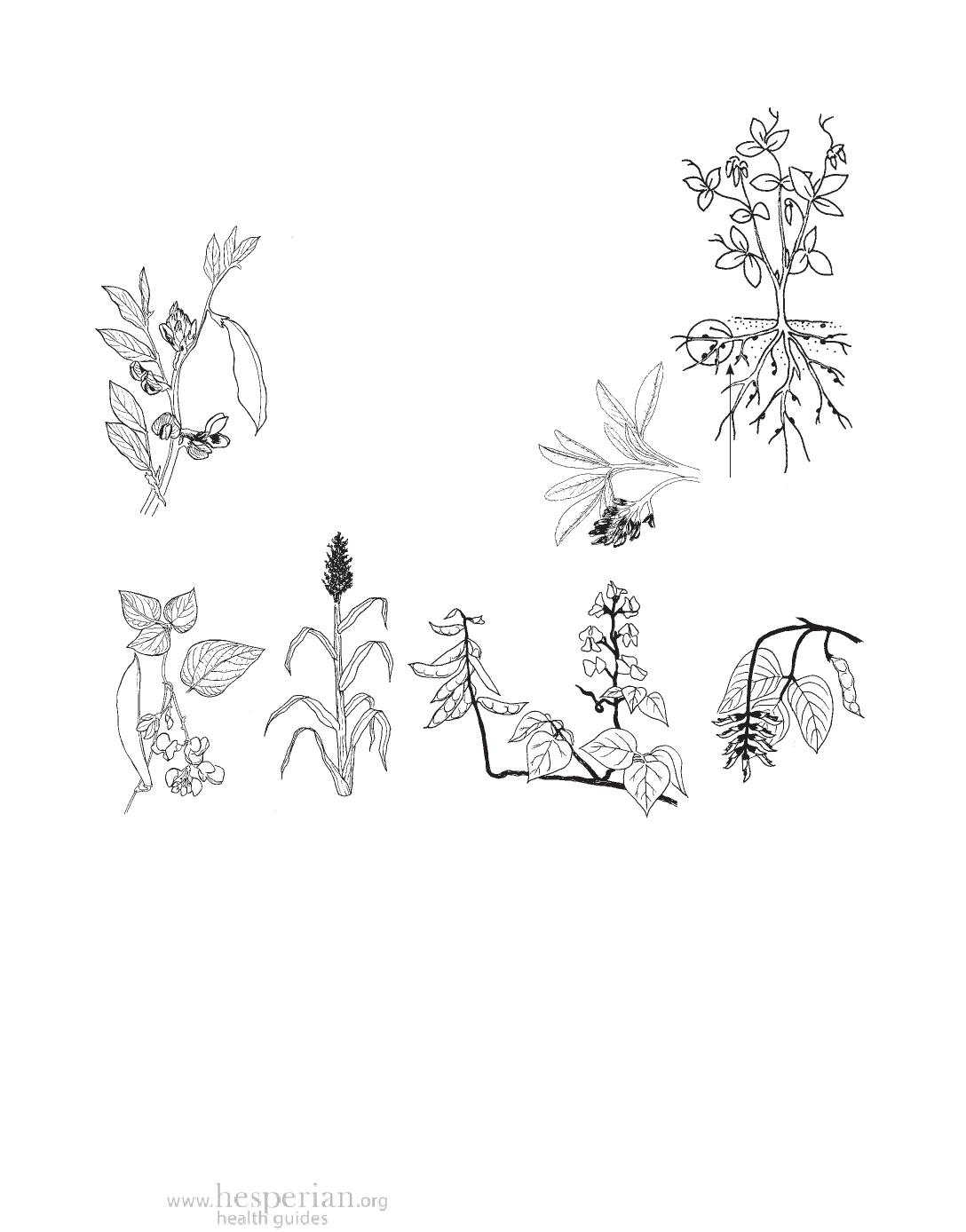
Green manures and cover crops
Green manures are plants that help fertilize the soil.
These same plants work as cover crops to choke out
Fava bean
Vicia faba
weeds. Since many plants do both these
jobs, they are called by both names: green
manures and cover crops.
Many green manures are from the
“legume” family (plants with seed pods, such
as peas, beans, and tamarind trees). Plants
in the legume family add nitrogen to the
soil. If you pull up a bean plant, or
look at some tree roots, you will
often see small balls formed
on the roots. These little balls
collect nitrogen from the air and
put it into the soil. This makes the soil
more fertile.
Alfalfa
Medicago sativa
Improving Soil 285
The small balls
(nodules) on the
roots of legume
plants put nitrogen
into the soil.
Runner bean
Phaseolus coccineus
Sorghum
Sorghum
Lablab bean
Dolichos lablab
Velvet bean
Mucuna pruriens
Green manures have many benefits:
• They cover the soil, protecting it from erosion and helping it hold water.
• They add organic matter to the soil, making it more fertile.
• After using green manures for several years, the soil becomes easier to work.
• There are no costs for labor or transport because green manures grow right
in the field where they are used.
• Planted with other crops, they control weeds and insect pests.
Green manures have other uses besides improving soil. Some provide food, such
as oats, amaranth, rye, and beans. Others provide fodder for animals, such as
alfalfa and clover. Plants such as Sudan grass and others in the mustard family
prevent crop diseases. Trees used as green manures can provide firewood.
A Community Guide to Environmental Health 2012